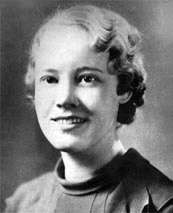Genevieve Grotjan Feinstein
| Genevieve Grotjan Feinstein | |
|---|---|
 | |
| Born | 1912 |
| Died | 2006 (aged 93–94) |
| Other names | Genevieve Grotjan |
| Citizenship | American |
| Fields |
Mathematics Cryptanalysis |
| Institutions | Signals Intelligence Service |
| Known for | Deciphering the Purple machine |
| Spouse | Hyman Feinstein |
Genevieve Grotjan Feinstein (1912–2006) was an American mathematician and cryptanalyst. She worked for the Signals Intelligence Service throughout World War II, during which time she played an important role in deciphering the Japanese cryptography machine Purple, and later worked on the Cold War-era Venona project.
Career
Feinstein discovered a passion for mathematics at a young age and aspired to become a math teacher until the beginning of World War II, when U.S. President Franklin D. Roosevelt made it possible for women to fulfill non-combat roles in the military. She passed the necessary tests to become a government mathematician in 1939, and was hired by William F. Friedman to work as a cryptanalyst for the Army's Signals Intelligence Service (SIS). For eighteen months, she worked with other SIS codebreakers to decipher the code used by Purple, a Japanese cryptography machine, and ultimately played a key role in cracking the cipher in September 1940.[1] This enabled the construction of an analog machine by the SIS which in turn enabled the interception of almost all messages exchanged between the Japanese government and its embassies in foreign countries.[1][2]
After the conclusion of World War II, Feinstein continued to work at the SIS throughout the Cold War, trying to decode encrypted messages sent by the Soviet KGB and Main Intelligence Directorate (GRU).[1] She made a significant breakthrough in the early stages of the Venona project, which allowed American cryptographers to recognize when an individual cipher key was reused, but resigned from the SIS in 1947.[3] After resigning from government cryptanalysis, she began working in the faculty of George Mason University, where she served as a professor of mathematics.[1]
Personal life
Genevieve Grotjan married the chemist Hyman Feinstein in 1943, and they had a son named Ellis.[1] She died in 2006.[3]
Legacy
Feinstein's breakthrough in deciphering the Purple machine has been called, in the Encyclopedia of American Women at War, "one of the greatest achievements in the history of U.S. codebreaking".[1] She was posthumously inducted into the NSA Hall of Honor in 2010, and an award in cryptology was established at George Mason University in her honor.[3]
References
- 1 2 3 4 5 6 Findling, Megan (2013). "Feinstein, Genevieve Grotjan (1912–2006)". In Tendrich Frank, Lisa. Encyclopedia of American Women at War: From the Home Front to the Battlefields. ABC-CLIO. pp. 215–217. ISBN 978-1-59884-443-6.
- ↑ "Genevieve Grotjan Feinstein". National Security Agency. January 15, 2009. Retrieved March 14, 2015.
- 1 2 3 "Genevieve Grotjan Feinstein: 2010 Inductee". National Security Agency. April 6, 2011. Retrieved March 14, 2015.